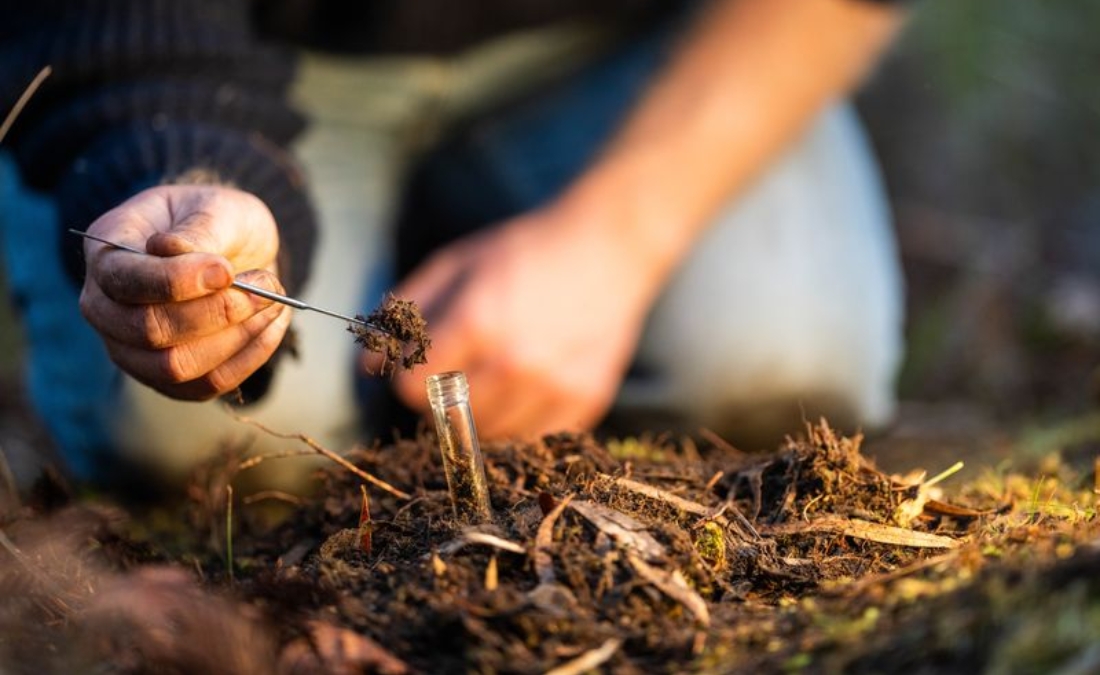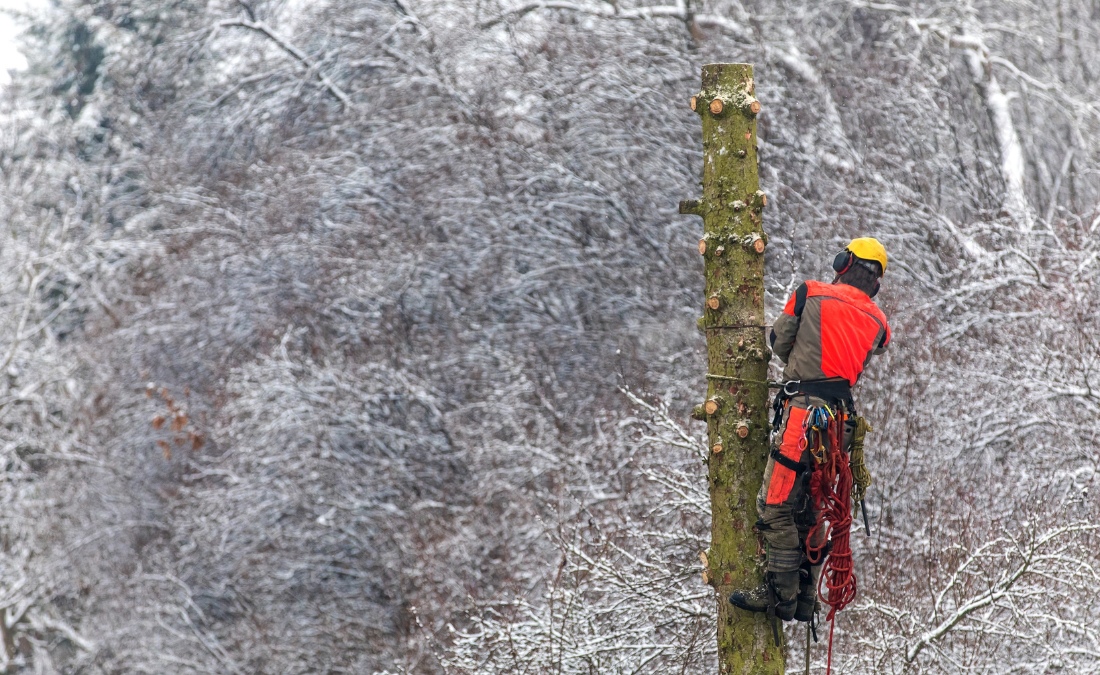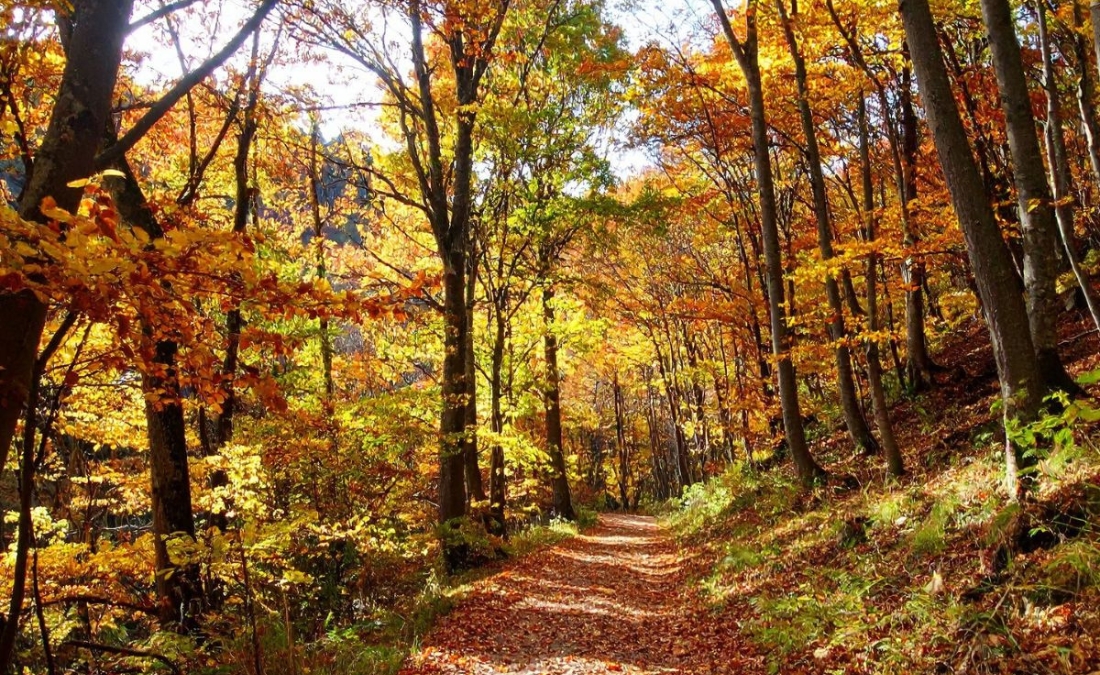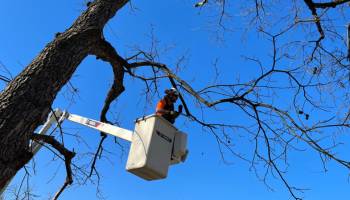8 Common Signs of Tree Diseases in Oklahoma City
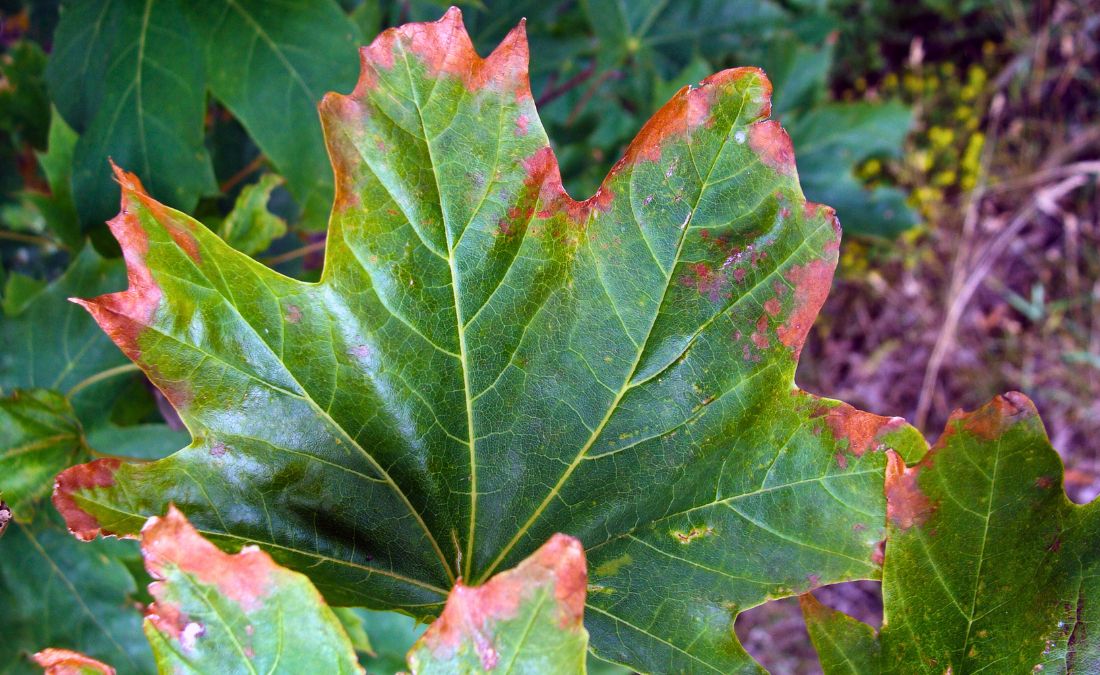
Strange spots, thinning leaves, or early color changes? Learn how to spot tree disease symptoms early in Oklahoma City with expert tips from Arbor Masters.
Healthy trees are a beautiful part of any Oklahoma City landscape – but when something looks off, it’s hard to ignore. Discolored leaves, dead branches, or thinning canopies might be more than just seasonal stress – they could be signs of a serious tree disease.
From fungal infections to insect-borne threats, our trees face a variety of health challenges. Learn about the common signs of common tree diseases and what to do when you see them.
Key Takeaways:
- Common signs of tree diseases include wilting or discolored leaves, spots on foliage, dead branches in the canopy, early leaf drop, increased insect activity, fungi at the tree base, and unusual leaning.
- Anthracnose, powdery mildew, Dutch elm disease, fire blight, pine wilt, and cedar apple rust are among the most common Oklahoma City tree diseases.
- When you notice potential disease symptoms, it’s crucial to have a professional arborist examine your trees rather than attempt self-diagnosis, as many issues create similar symptoms.
- Trees most vulnerable to diseases in Oklahoma City include elms, crabapples, pines, and oaks.
- Tree diseases left untreated can lead to serious structural issues or complete tree death, potentially creating safety hazards that might require removal.

8 Common Signs of Tree Diseases in Oklahoma City
Tree diseases can show up in different ways, but there are a few common warning signs every homeowner should know. Whether it’s disease or another underlying issue, it’s important to have a certified arborist take a closer look and determine what’s really going on with your trees.
1. Wilting Leaves That Aren’t Recovering
Wilting leaves can be a sign of numerous problems, including disease. Leaves turn sunlight into food, and when they wilt and are not working at maximum efficiency, they can stress your tree. Many common tree diseases in Oklahoma City can cause leaves to wilt, such as:
Wilting is a common problem for trees, and it may not indicate your tree is diseased. Some other issues wilting could indicate include:
- Lack of water
- Overwatering
- Summer heat stress
Have an arborist examine your trees when you notice excessive wilting to determine if it is a disease or other problem.
2. Showing Unusual Leaf Discoloration
Your tree’s leaves should be their standard color during the summer to perform photosynthesis. When they are brown or show their fall colors early, this could indicate that your tree is sick with a disease like bacterial leaf scorch.
A single discolored leaf is likely not something to worry about, but large sections of the canopy experiencing brown or yellow color is a sign you need to do something for your tree. While it could indicate a disease like anthracnose or powdery mildew, it could also point to other factors, such as:
- The soil is highly acidic
- There isn’t enough nitrogen for the tree
- You have compacted soil
- Sap-sucking insects are attacking
- Salt damage to your trees
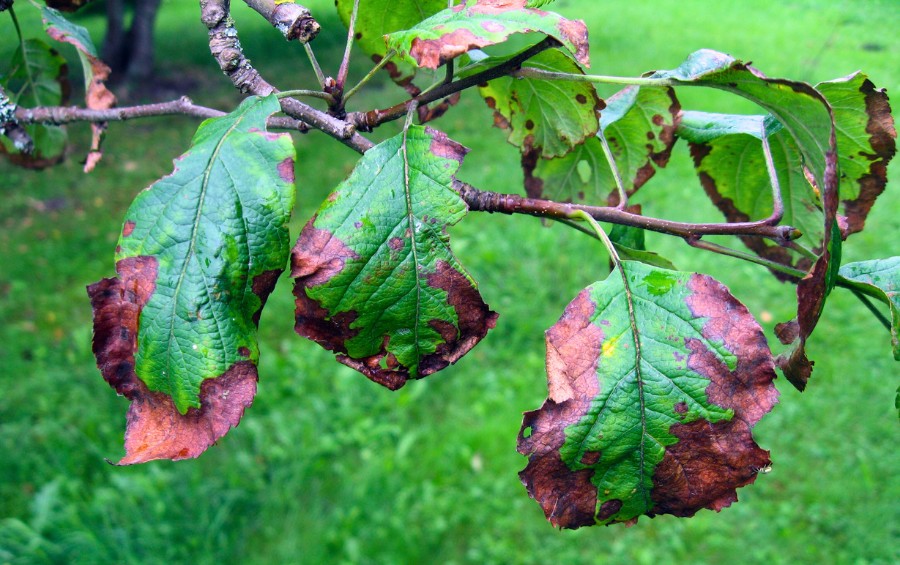
3. Developing Dark Spots or Blemishes on Leaves
Healthy leaves should be free of blemishes or spots. When they appear, it is typically a sign of a bacterial or fungal infection affecting your trees. Spots may also appear on the bark or the fruit of a tree.
Fire blight is the most concerning of these diseases that cause leaf spots, as it can cause severe damage to a tree and even kill some species. Anthracnose and powdery mildew are also culprits of spots on your leaves.
Spots are not always from diseases – they can also develop from insects that feed on leaves.
4. Forming Dead or Bare Branches in the Canopy
Branches can end up dead from several factors, and one or two small dead branches in the canopy are not something to worry too much about. However, when you have several patches in the canopy that appear dead or dying, this should be a wake-up call that your tree needs help.
Dead branches can result from most diseases, so diagnosing the exact problem with your tree when it is the only symptom you notice can be impossible for most people. Call an arborist as soon as possible and have them diagnose what is ailing your Oklahoma City tree.
5. Attracting More Insects Than Usual
If you notice increased insect activity around your tree, it could indicate it is dealing with a disease. Some insects transmit diseases, and a diseased tree may attract other pests.
When diseases and insects work together, they can quickly kill a tree, necessitating removal and forcing you to come up with a new plan for the space your tree used to inhabit.
6. Dropping Leaves Too Early in the Season
Most deciduous trees should hold onto their leaves until fall, shedding them naturally before winter. If you notice large portions of leaves dropping in the middle of summer, it’s a sign something is seriously wrong and requires prompt attention.
One of the most concerning culprits is Dutch elm disease (DED), a fast-moving and deadly illness that causes premature leaf drop in elm trees. This aggressive disease can kill an infected tree in just a few months and spread quickly to others nearby.
If your elm is already showing signs of decline, removal may be the only option – but catching it early can help protect surrounding trees through preventive treatments and targeted care from a Certified Arborist.
7. Growing Fungi or Mushrooms at the Base
Mushrooms at the base of your tree may make it look interesting, but they can be a sign that something is wrong. Fungi often grow on the base of a tree dealing with root problems, including rot or disease.
“Not all fungi are an emergency for your tree. Some mushrooms are benign and won’t harm it. But being able to tell which mushrooms are good or bad is pretty tricky. So, it’s usually best to get a second opinion from an arborist to see if it is worth taking action over.” – Tim Henson, Arbor Advisor at Arbor Masters
8. Leaning Suddenly or More Severely
Ideally, your tree should come up perfectly vertical from the ground. However, this often isn’t the case. A few degrees of a lean is nothing to worry about, but when a tree that was previously almost entirely vertical begins to lean to one side, it is likely a sign that something is wrong.
Trees can lean for many reasons, with disease being a common one. Other reasons include:
- Shallow roots
- Root death
- Internal decay
A leaning tree isn’t just one that will potentially die; it is one that may come crashing down on your house. Dealing with a leaning tree, whether through attempting to treat the disease affecting it or removing it, is key to keeping you and your family safe from harm.
Frequently Asked Questions About Identifying Tree Diseases
To help you better understand the risks your trees face from diseases, we’ve answered some common questions homeowners often have about sick trees.
What are some of the common tree diseases in Oklahoma City?
Some of the most common diseases in the Oklahoma City area include:
- Anthracnose
- Pine wilt
- Powdery mildew
- Dutch elm disease
- Fire blight
- Cedar apple rust
What should I do when I notice signs of disease in my trees?
When you notice something is wrong with your tree, call an arborist and have them inspect it as soon as possible. Many diseases create similar symptoms, and some problems with your tree may not be related to a disease at all. A professional assessment will explain precisely what is wrong with your tree and how to treat it.
What trees are most at risk of diseases in Oklahoma City?
Some common Oklahoma City trees most at risk of disease include:
- Elms
- Crabapples
- Pines
- Oaks
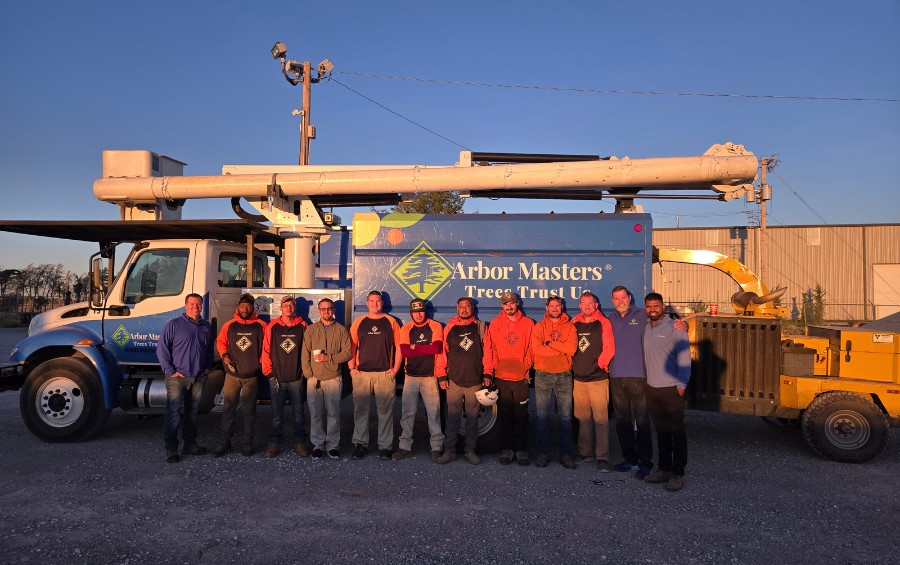
Arbor Masters Can Help Protect Your Trees from Diseases
If your trees aren’t looking their best – or you’re simply not sure what’s normal – it’s time to bring in the experts. The team at Arbor Masters includes ISA Certified Arborists trained to spot the early signs of disease, diagnose the issue, and recommend the right solution.
Whether you’re dealing with visible symptoms or just want peace of mind, we’re here to help. Call us at 405-495-8746 or request a quote online.

Get the latest local news, tree care tips, special offers, and company updates directly to your inbox! It's easy to subscribe and there's no spam - we promise.
"*" indicates required fields

